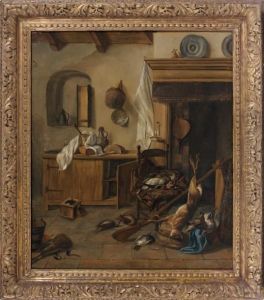Jacob De Claew Paintings
Jacob De Claew, also known as Jacob de Klaeuw, Jacob Claesz or Jacob Claesz. de Cleve, was a Dutch Golden Age painter whose life and work are not extensively documented, and his exact birth and death dates are not precisely known. He is believed to have been born between 1596 and 1600, likely in The Hague, Netherlands. His death is recorded as after 1631, which is when the last of his known works was dated.
De Claew was primarily known for his still life paintings. During the early 17th century, still life painting became an independent genre in the Netherlands, and artists like De Claew contributed to its popularity and development. His work typically depicted everyday objects such as food, flowers, and tableware, and he displayed a meticulous attention to detail and texture, a characteristic of many Dutch still life artists of the time. De Claew's paintings often featured a dark background, which helped to highlight the vivid colors and the intricate details of the subjects he painted.
Very little is known about De Claew's training and personal life. He is sometimes associated with the monogrammist 'JDC,' which appears on some still life paintings of the period. However, this attribution remains uncertain. There are no known pupils or followers who continued his style, and he does not appear to have been part of any significant artistic community or movement.
De Claew's work needs to be distinguished from that of other similarly named artists of the time, such as Claes Jansz Visscher and Hans Claesz. Their names and works are sometimes confused due to the similarity in name and period of activity. Despite the scarcity of information, De Claew's existing works continue to be of interest to art historians studying the still life genre in Dutch Golden Age painting. His paintings are part of the collections of various museums and continue to be studied for their contribution to the development of still life as a significant genre during this period.
